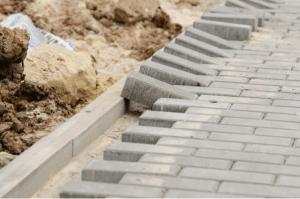A strong and stable foundation is the cornerstone of any successful construction project. Concrete footings, in particular, play a vital role in distributing the weight of a building and preventing settlement or subsidence. Understanding the different types of concrete footings is essential for ensuring that your structure stands the test of time. In this comprehensive guide, presented by Utah Concrete Lifting, we’ll delve into the world of concrete footings, exploring their types, functions, and best practices to help you build a strong and durable foundation.
1. Introduction
Concrete footings may not always be visible, but they are the unsung heroes of construction, providing the necessary support for your building’s weight and stability.
2. The Importance of Concrete Footings
Concrete footings serve two primary purposes: to distribute the load of the structure and to prevent settling or shifting of the foundation. Without proper footings, a building can experience structural issues over time.
3. Common Types of Concrete Footings
Learn about the most common types of concrete footings and their applications, including:
- Spread Footings: Ideal for most residential and small commercial buildings.
- T-Shaped Footings: Used for heavier loads and multistory buildings.
- Slab-on-Grade Footings: Suitable for single-story structures with no basement.
- Drilled Piers (Caissons): Ideal for unstable soil conditions or where bedrock is deep.
- Grade Beams: Used in combination with piles or caissons for added stability.
4. Selecting the Right Footing Type
Choosing the appropriate footing type depends on factors like building design, soil conditions, and local building codes. We’ll guide you through the selection process.
5. Footings in Special Conditions
In certain situations, standard footings may not suffice. Explore specialized footing solutions for frost-prone areas, sloped terrain, and expansive soils.
6. Construction Process
Understanding the construction process is crucial for ensuring that your footings are installed correctly. We’ll provide an overview of the steps involved.
7. Maintenance and Inspection
Proper maintenance and regular inspections are essential to ensure the longevity and performance of your footings. Learn how to keep them in optimal condition.
8. Conclusion
Concrete footings are the unsung heroes of construction, providing the foundation upon which buildings stand. By understanding the types of footings and their applications, you can ensure that your construction projects have a solid and durable foundation.
At Utah Concrete Lifting, we have extensive experience in foundation repair and maintenance. If you have questions about concrete footings, need inspections, or require assistance with foundation issues, contact us at 801-396-0391 or fill out our online form here.



